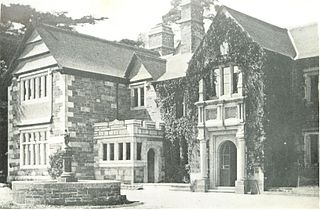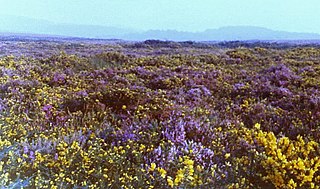 W
WThe Battle of Braddock Down was a battle of the south-western campaign of the First English Civil War. It was fought on open ground in Cornwall, on 19 January 1643. An apparently easy victory for the Royalists under Sir Ralph Hopton secured Cornwall for King Charles and confirmed Hopton's reputation as a commander. Hopton also gained respect for the mercy shown to his foe, of whom 1,500 were captured during and after the battle. The precise location of the battlefield is a matter of dispute, though English Heritage believe it to be within parkland at Boconnoc.
 W
WClyst St Mary is a small village and civil parish 3 miles (4.8 km) east of Exeter on the main roads to Exmouth and Sidmouth in East Devon. The name comes from the Celtic word clyst meaning 'clear stream'. The village is a major part of the electoral ward of Clyst Valley. At the 2011 Census this ward population was 2,326.
 W
WCornwall played a significant role in the English Civil War, being a Royalist enclave in the generally Parliamentarian south-west.
 W
WHingston Down is a hill not far from Gunnislake in Cornwall, England, United Kingdom. It is the subject of an old rhyme, due to the prolific tin mining that formerly took place in the area:Hingston Down well ywroughtIs worth London Town dearly bought.
 W
WLewtrenchard is a village and civil parish in the West Devon, district, in the county of Devon, England. Most of the larger village of Lewdown is in the parish. In the Domesday Book of 1086, a manor of Lew is recorded in this area and two rivers have the same name: see River Lew. Trenchard comes from the lords of the manor in the 13th century.
 W
WThe Battle of Lostwithiel took place over a 13-day period from 21 August to 2 September 1644, around the town of Lostwithiel and along the River Fowey valley in Cornwall during the First English Civil War. A Royalist army led by Charles I of England defeated a Parliamentarian force commanded by the Earl of Essex.
 W
WPendennis Castle is an artillery fort constructed by Henry VIII near Falmouth, Cornwall, England between 1540 and 1542. It formed part of the King's Device programme to protect against invasion from France and the Holy Roman Empire, and defended the Carrick Roads waterway at the mouth of the River Fal. The original, circular keep and gun platform was expanded at the end of the century to cope with the increasing Spanish threat, with a ring of extensive stone ramparts and bastions built around the older castle. Pendennis saw service during the English Civil War, when it was held by the Royalists, and was only taken by Parliament after a long siege in 1646. It survived the interregnum and Charles II renovated the fortress after his restoration to the throne in 1660.
 W
WThe Cornish rebellion of 1497, also known as the "First Cornish rebellion of 1497", was a popular uprising that began in Cornwall in the south-west of England and culminated with the Battle of Deptford Bridge near London on 17 June 1497.
 W
WThe Battle of Sampford Courtenay was one of the chief military engagements in the Western Rebellion of 1549.
 W
WThe Battle of Sourton Down was a successful Parliamentarian ambush at Sourton Down, in South West England, on 25 April 1643, during the First English Civil War. After a failed attack on Royalist-held Launceston, the Parliamentarians fell back on their base at Okehampton, pursued by a Royalist army under Sir Ralph Hopton, who marched overnight, planning to attack the town at dawn.
 W
WThe Battle of Stratton, also known as the Battle of Stamford Hill, took place on 16 May 1643, during the First English Civil War. In the battle, the Royalists destroyed Parliament's field army in Devon and Cornwall.
 W
WWoodbury Common in East Devon, England is an area of common land that is predominantly heathland adjacent to the village of Woodbury. It is bordered to the south by the edge of the towns of Exmouth and Budleigh Salterton, the hamlet of Yettington to the east, and the A3052 to the north. It is part of the East Devon Area of Outstanding Natural Beauty, and is a Site of Special Scientific Interest.